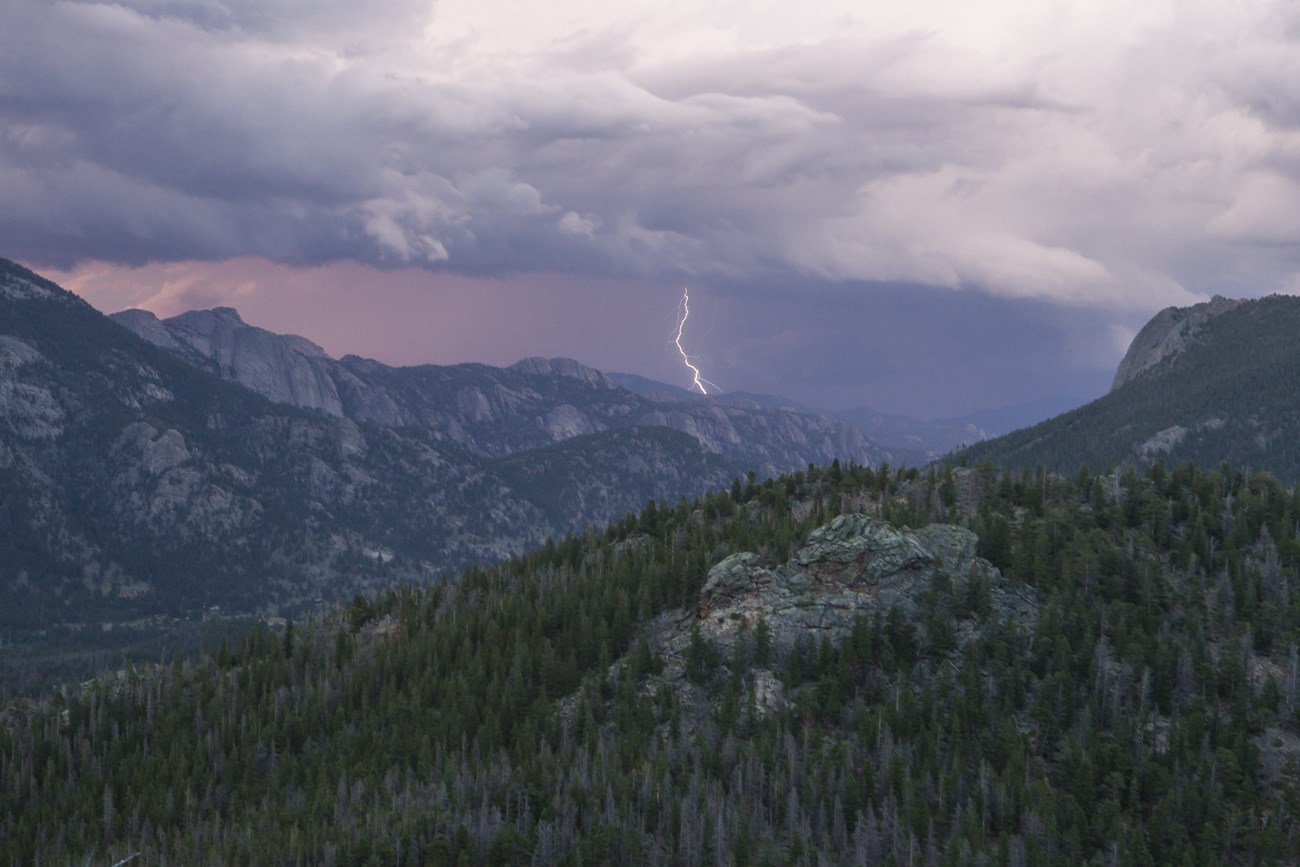
NPS One of the most powerful forces of nature is lightning. It is beautiful to watch, but also extremely dangerous. In the United States, there are about 25 million lightning flashes every year. In Rocky Mountain National Park, lightning flashes are common from June through September. Each lightning flash can potentially cause serious injuries or death. It is important to understand the dangers of thunderstorms and lightning, so that you can get to a safe place. What is Lightning?Lightning is a giant spark of electricity in the atmosphere or between the atmosphere and the ground. As lightning initially develops, air acts as an insulator between the positive and negative charges in a cloud and between a cloud and the ground. When the differences in charges becomes too great, this insulating capacity of the air breaks down and there is a rapid discharge of electricity that we know as lightning. How are Thunder and Lightning Connected?Thunder is the sound made by a flash of lightning. As lightning passes through the air, it heats the air quickly. This causes the air to expand rapidly and creates the sound wave we hear as thunder. During a thunderstorm, you can hear thunder about 10 miles from a lightning strike. Since lightning can strike outward 10 miles from a thunderstorm, if you hear thunder, you are likely within striking distance from the storm. Below Are Some Tips for What to Do When Recreating During a Thunderstorm
National Weather Service How to Manage Lightning Risk When Recreating in Rocky Mountain National ParkBefore heading out on your next Rocky Mountain adventure, know how to protect yourself when thunder roars and lightning strikes. Most importantly, be aware of your surroundings and know the most high-risk places to be compared to the safest locations to be when recreating in the mountains. When it comes to lighting, there are no fully safe options in the outdoors. What If I am Driving on Trail Ridge or Old Fall River Roads?If you hear thunder or see lightning when driving on Trail Ridge Road or Old Fall River Road, or if you are standing at an overlook like at Rock Cut or Rainbow Curve, the best thing to do is get back inside your vehicle and shelter there. Do not walk to overlooks or stand in parking areas during a thunderstorm.
What If I am Out in the Park, Not Near My Vehicle?On a scale of 0 (highest risk - avoid) to 10 (safest as possible), know the most risky places to be compared to the safest places to be during a thunderstorm. Refer to the graphic above labeled "Backcountry Lightning Risk Management."
When Camping Inside a TentWhen camping inside a tent, keep in mind that a tent has metal poles and could attract lightning.

NPS, NWS and NOAA What to do If You Cannot Move to a Safer Location?If you are caught outside during a thunderstorm and cannot get to a safer location, the following steps can help reduce your risk of a lighting strike:
|
Last updated: July 3, 2024
